Love cookies? Thick and chewy, thin and crispy – no matter how you like your cookies, I’ve put together my best tips to help you make YOUR perfect Chocolate Chip Cookie.
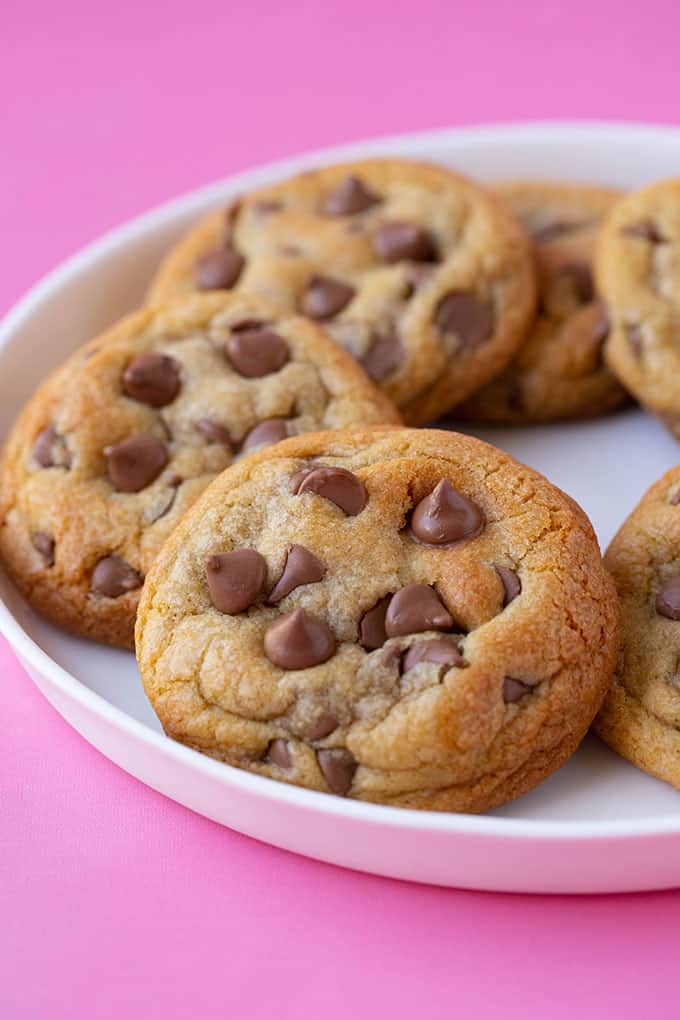
Perfect Chocolate Chip Cookies.
- Why are my cookies flat?
- How to make chocolate chip cookies that don’t go flat:
- Why didn’t my cookies spread?
- Why add cornstarch or cornflour to cookies?
- Why do I need to refrigerate cookie dough?
- How can I make a gooey chocolate chip cookie?
- How to make the perfect chocolate chip cookie?
- Chocolate Chip Cookie Recipes
We all know them and love them. But what makes them taste so good? Do you like their crisp, buttery edges? Or is it the soft centre oozing with melted chocolate? Do you like them thick and chunky or is a thin and crunchy cookie more your style?
Today, we’re doing a dive into the science of baking to discover exactly how to make the perfect chocolate chip cookie. But first I want to answer some of the most common problems when it comes to baking cookies.
Why are my cookies flat?
Have you ever had problems with your cookies spreading too much in the oven?
Cookies, like a lot of baking, rely heavily on the balance of dry ingredients to wet ingredients. One of the most important pieces of the cookie puzzle is butter. Most chocolate chip cookie recipes call for butter at room temperature. And this is where everything can go wrong.
Room temperature butter helps the butter and sugar to combine more easily. But room temperature or softened butter, should be soft to the touch but certainly not near ‘melted’ territory.
When cookies flatten out in the oven, combining into a sticky mess, it can often mean the butter was too soft. This can happen if the butter was left out too long or if you used the microwave to soften your butter – I don’t recommend this. Leaving the butter out on your kitchen bench for a few hours should be enough time for it to cool down to room temperature. Perhaps even quicker if you live in a very warm, humid climate.
If the recipe tells you to chill the cookie dough, it’s important that you do so. Chilling the cookie dough in the fridge will help the cookie dough firm up and will also decrease cookie spreading.
If your cookies spread too thin and you feel your butter was at the correct temperature, and you chilled the dough (if required), it may be that your recipe needs to be adjusted when it comes to dry vs wet ingredients.
If the cookie dough is too wet, you could add a little bit more flour to your batter. Start with just 35 grams extra. Be careful though, the more flour you add, the more chance you have at your cookies not spreading at all. And too much flour can also result in a dry cookie – yuck!
How to make chocolate chip cookies that don’t go flat:
- Don’t use the microwave to soften your butter when making cookies
- Ensure your butter is at room temperature but not wet or melted in any way.
- Chill the dough. If you’re baking cookies right now and you notice they are spreading too thin, pop the cookie dough in the fridge for 30 minutes or so and try again.
- Don’t put your cookie dough on a hot baking tray as this will cause the butter to start melting immediately, increasing your chances of flat cookies. Use an oven tray that’s at room temperature and lined with either baking paper or a silicone mat.
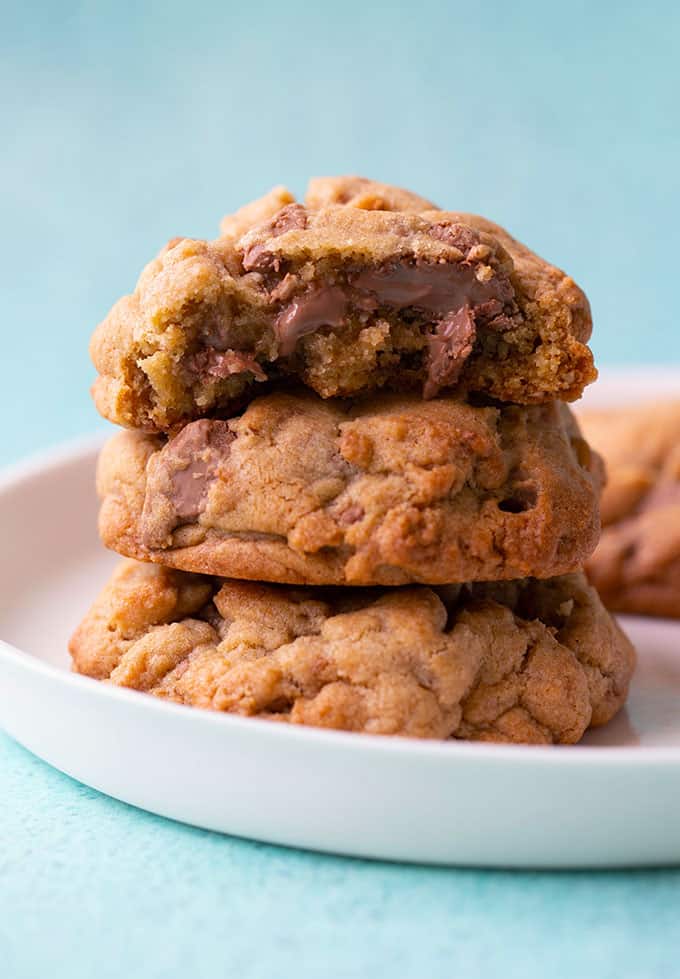
Why didn’t my cookies spread?
Another common problem when it comes to baking cookies is that they don’t spread but stay in one thick ball while baking. Again, this is often a case of looking at the dry ingredients vs wet ingredients ratio.
If your cookies didn’t spread out, it may be that you added too much flour. Always measure out your flour flour using a baking scale for accurate results.
If you refrigerate your cookie dough for a few hours or overnight, it may need to come to room temperature before baking. If you cookie dough is too cold, it’ll take longer for your cookies to warm in the oven and they may not have time to spread out correctly.
Try doing a one tester cookie first. If it doesn’t flatten naturally, let your cookie dough come to room temperature and then try again. Or you might need to give it a bit of help and flatten it with your hand before baking.
save this recipe
Next time, you could try adding a little less flour to correct the butter/flour ratio.
Why add cornstarch or cornflour to cookies?
It has become more and more common that cornstarch or cornflour is listed as an ingredient in chocolate chip cookie recipes. A little cornstarch results in a softer and more chewy cookie. I sometimes use cornstarch or corn flour in my cookies as I notice it can also help produce a thicker cookie. Even so, it is usually an optional ingredient, so if you don’t have it, you can usually just leave it out if it’s only a tablespoon or so.
Why do I need to refrigerate cookie dough?
Refrigerating cookie dough helps give added flavour to your cookies as it gives the cookie dough time for the flavours to develop. If your cookie recipe has a higher wet ingredient to dry ingredient ratio, it can also help the dough to firm up and prevent your cookie from spreading in the oven.
Many of my cookie recipes don’t call for refrigerating the dough but if they do, it’s for a reason. My Classic Chocolate Chip Cookie recipe uses melted butter, which makes for extra soft and chewy cookies. But it also makes for a wet cookie dough, so chilling the dough is a must!
How can I make a gooey chocolate chip cookie?
This is one of the most common question I get when I post gooey pictures of cookie on Instagram. Want to know my trick? Most of the time I use chopped chocolate rather than chocolate chips.
Use a block of chocolate and chop it up by hand instead of chocolate chips. It’ll ensure there’s gooey pockets of chocolate in every bite!
I also press more chocolate onto the top of each cookie as soon as they come out of the oven.
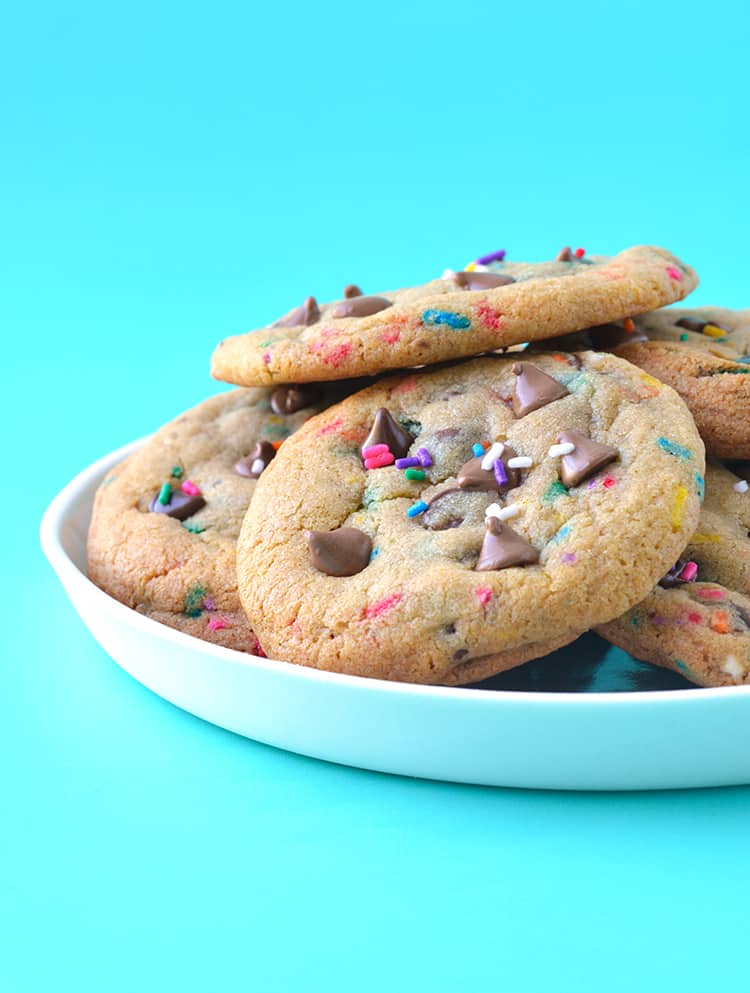
How to make the perfect chocolate chip cookie?
It’s hard to offer you one recipe that is the perfect chocolate chip cookie because everyone has different criteria when it comes to rating a chocolate chip cookie. But I do have a few suggestions that may help you pick the recipe that best suits you OR adjust one of your existing recipes according to how you want your cookie.
A thick and chewy chocolate chip cookie
More flour is needed to make a thicker cookie to help it from spreading too thin in the oven. Egg yolks are often used in chocolate chip cookie recipes to add richness and softness to the dough, resulting in a chewier cookie. For a thicker cookie dough, also consider refrigerating the dough before baking. Starting with cold butter can also help! For a truly thick chocolate chip cookie, try my Levain Bakery Chocolate Chip Cookie recipe.
A thin and crispy chocolate chip cookie
Less flour is needed to make a thin and crispy cookie, as you want to encourage the dough to spread in the oven. I would also suggest not adding cornstarch or corn flour and baking your cookie for 2-3 minutes longer than a regular cookie to get those crispy edges.
An extra gooey chocolate chip cookie
Use hand cut chunks of chocolate rather than store bought chocolate chips so you have different sizes of chocolate inside each cookie. Put more chocolate on top each cookie while they are still warm from the oven so they go extra melty.
Chocolate Chip Cookie Recipes
Classic Chocolate Chip Cookies (soft and chewy)
Chunky Chocolate Chip Cookies (thick with LOTS of chocolate)
Funfetti Chocolate Chip Cookies (sprinkles!)
Vegan Chocolate Chip Cookies (egg free)

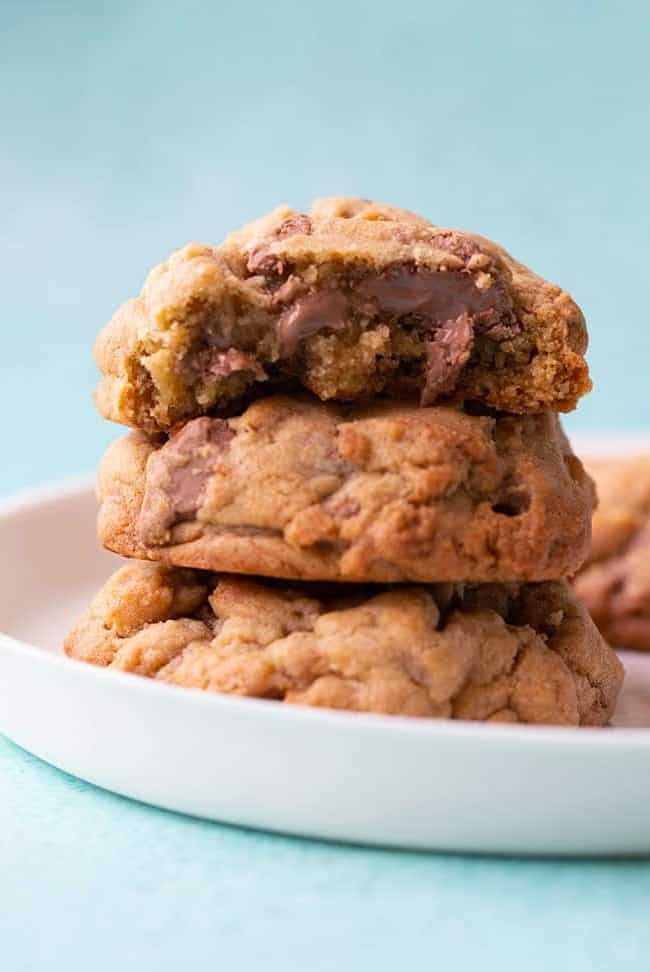

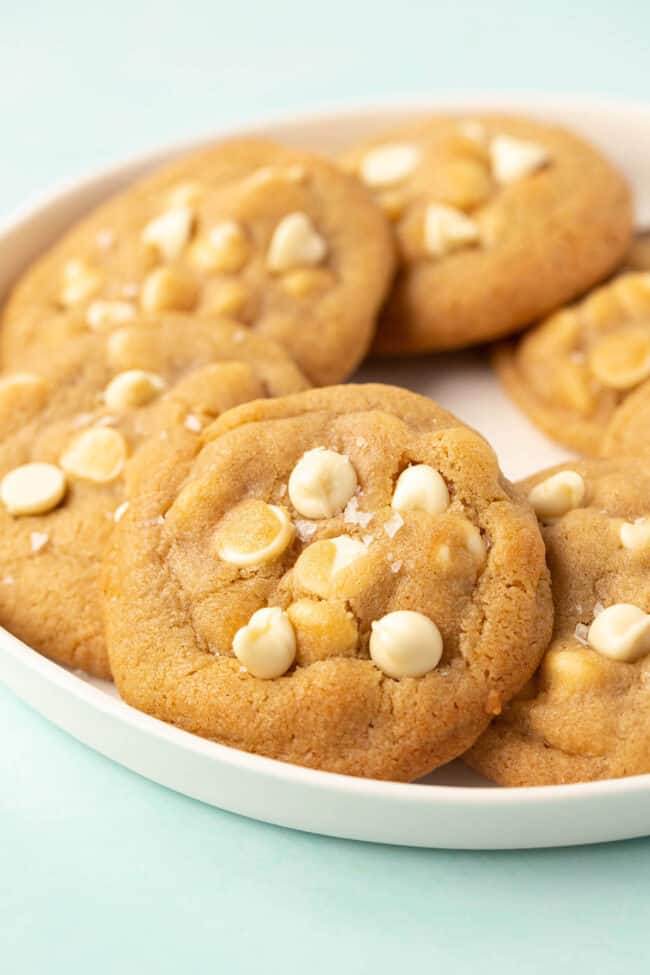

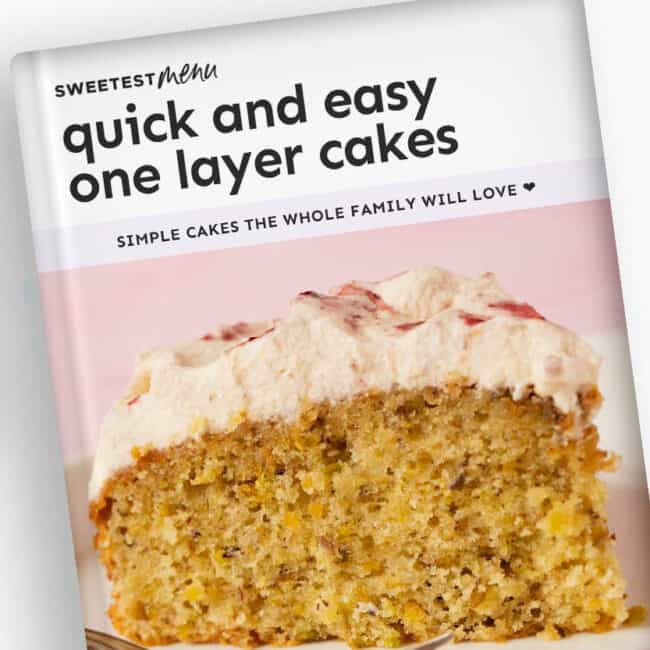
Kat says
I moved to southeast Texas 2 years ago, love to bake anything! But since moving here, I could not get my cinnamon rolls to rise, cookies always flattened out. I found your chocolate chip recipe and read what you wrote about baking in high humid areas.
I made your chocolate chip cookies today..they did not fall! Yeah!
Thank you!
Jessica Holmes says
Yay! So happy it was helpful Kat!